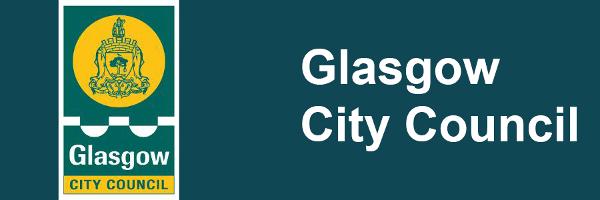Bellahouston Park
This extensive park (68.4 Hectares/169 Acres) has many features and facilities. It boasts formal gardens and open parkland in which to relax and take in views over the city. Quiet contemplation can also be had at the House for an Art Lover and for the more active and adventurous there are extensive sports facilities.
Where is it?
What can I do there?
The park has a wide variety of facilities to suit all age groups:
- Two Bowling Greens - this facility is seasonal and weather dependant. Please phone 0141 276 0811 for actual opening times.
- Three Play Areas
- Orienteering Course
- Walled Garden
- Sunken Garden
- Horseshoe Garden
- Monument for the Empire Exhibition
- Papal Retaining Wall (John Paul II)
- Portico Entrance
- Empire Exhibition Commemorative Cairn
- Papal Garden (Benedict 16th)
- Glasshouse for a Plant Collector
- Maze (Alice in Wonderland) entitled "Amaze"
- Glasgow Roots
- Sculpture Garden (Outside the House for an Art Lover)
Also within the parks grounds you can find:
- Educational Allotment Garden
- Bellahouston Leisure Centre and Swimming Pool
- an "All Weather" Hockey Pitch
- an "All Weather" Cycling Track
- Bellahouston Leisure Centre
- Bowling Green
- House for an Art Lover
- Palace of Art Centre for Sports Excellence Centre
- Charles Rennie Mackintosh House for an Art Lover
- Glasgow Ski Centre
- Outdoor Cycle Track
- Cricket Square (Artificial and Grass Squares)
- Studio Pavilion/Heritage Centre
- There is an extensive network of asphalt footpaths, which are suitable for walking, cycling as well as wheelchair and pram access.
- Public toilets
- Bellahouston Leisure Centre
- Bowling Green
- House for an Art Lover
When is it open?
The park is open at all times however there are specific facilities (e.g. toilets) within the park that are subject to opening times.
History
The main part of Bellahouston Park was acquired by the City in 1895 for the sum of £50,000 and opened to the public in 1896.
- Three years later, the city's second municipal golf course was established at Bellahouston following the success of the course at Alexandra Park
- The park was extended in 1901 by the addition of a part of Dumbreck Lands purchased for the sum of £2,824 from Sir John Maxwell, Bart.
- A further addition was made in 1903 by including the lands of Ibroxhill at a cost of £40,222 from which commanding views of the city are available.
- In 1938 the famous Empire exhibition was held at the park.
- The site took only fourteen months to build and the cost of admission was one shilling.
- A mammoth attendance of 12.5 million was recorded and despite this, the exhibition made a loss of £130,000.
- Today, of the 200 palaces and pavilions that were built for the exhibition only the Palace of Art remains - it now serves as a Sports Excellence Centre.
- a stone Peace Cairn built for the exhibition is still visible from the rock garden.
- In 1996 Charles Rennie Mackintosh's House for an Art Lover was completed from original drawings of 1901 and now serves as contemporary centre of excellence for the visual arts.
- In 1982 the park was the venue for the visit of his Holiness Pope John Paul II which attracted 280,000 people and part of the ceremonial platform still remains.
- His Holiness Pope Benedict XVI visited England and Scotland on a four-day State Visit from 16-19 September 2010. The Holy Father arrived in Scotland on Thursday the 16th where he was received at the Palace of Holyroodhouse by Her Majesty the Queen. Later that evening Pope Benedict celebrated a public Mass at Bellahouston Park with Archbishop Mario Conte in front of 65,000 pilgrims. The Scottish composer James MacMillan was commissioned to write a new Mass for the visit (the Blessed John Newman Mass) and over 700 singers were in the choir. The mass was celebrated on a magnificent purpose built stage at Bellahouston and the Glasgow ceremony was televised worldwide to an audience estimated at over one billion people. A Papal Memorial Garden was built in 2011 to commemorate this event.
Outstanding Features
- There are several points of horticultural interest such as the walled garden with its fine collection of ferns and daffodils collected by the 19th century plant collector Peter Barr who lived locally. It also boasts a wide variety of herbaceous perennials, wall-trained shrubs, Chrysanthemums, Dahlias, and annual borders.
- The House for the Art lover also has a less formal garden consisting of mixed shrubs and herbaceous borders with a collection of heathers and heaths.
- The flanks of the central Ibroxhill is clothed in Rhododendrons and under planted with a vivid display of spring daffodils. It affords views over much of the city and as far as Ben Lomond on a clear day. Also located here is a granite stone unveiled by King George VI on 9th July 1937 which marked the site of the Empire Exhibition of 1938 and was subsequently relocated to where it stands today.
- Find out more about the features in the park in the Bellahouston Park heritage trail (PDF, 3 MB).




